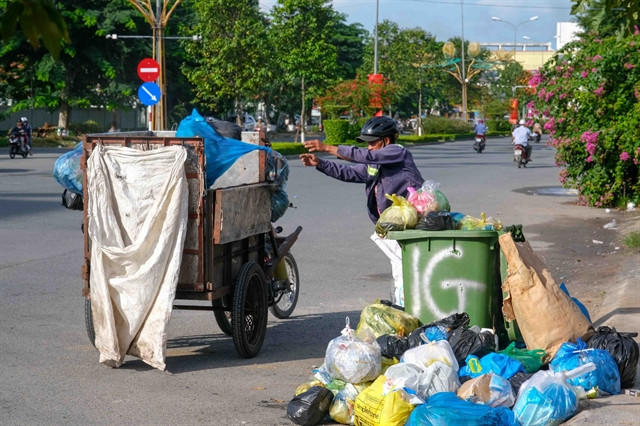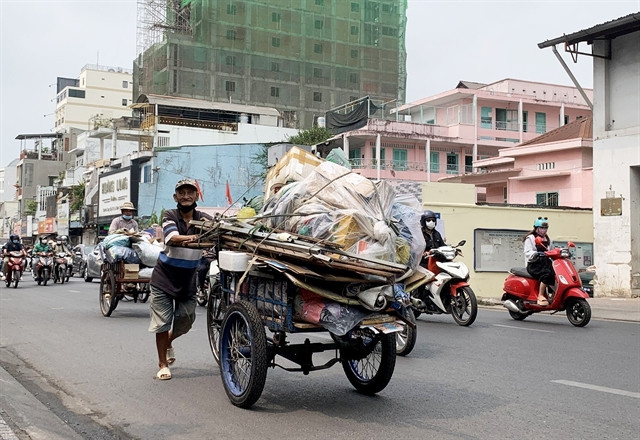 |
|
A waste collection point in the Mekong Delta City of Can Tho. |
Thanh Trà*, a graphic designer was assigned to make illustrations for her company’s youth union campaign on sorting daily waste.
As she went on Google to search for inspiration, she had difficulty finding a specific document for waste classification, and finally opted to base on a generic guideline found on the internet.
A common misconception is that any packaging with the word ‘paper’ on its name is organic waste, while in reality, paper cups and food containers usually have a layer of waterproof film made from nylon, making them difficult to sort and recycle.
Meanwhile, Huyền, a resident in Ba Đình District, Hà Nội has a habit of placing old bottles and containers in front of her house so that waste collectors can easily retrieve them.
Noticing that black plastic plant nursery pots were never picked up, she talked to one of the collectors and found out that due to the dyeing method, this type of plastic is not fit for the common recycling procedures and is hard to detect in automatic waste sorting systems.
Black plastic containers have also become prevalent in food delivery due to their low costs.
Huyền, who also has an at-home food processing business, has since switched to white or colourless containers.
She hopes that this information will be available to more small business owners so that they could have a better understanding and contribute to reducing plastic waste.
Waste collection
Right now, household waste is mostly collected with garbage carts in each residential area.
Garbage truck workers and waste collectors will sort out recyclable pieces of waste at the collection points before it is loaded onto the trucks.
Phương, a resident in Thanh Trì District said that her family’s habit changed once she saw how trash collectors cleaned out leftovers from single-use containers for recycling.
In the past, she would usually throw these used boxes and cups away as she thought no one would take them.
Phương’s family now clean these containers after use, and then put them in a separate bag from the rest of the trash, as she believes it would ease the workload for waste collectors.
 |
Thanks to multiple campaigns, an increasing number of families are now aware of the importance of waste sorting at home, and have put aside carton boxes and cans for easier waste collection.
Last year, the government also issued Decree 45/2022/ND-CP, which puts a fine of VNĐ500,000-1 million (US$20.5-41) on families and individuals that do not sort out and use appropriate bags for their domestic solid waste.
A study found that informal trash collectors, known in Vietnamese as “đồng nát” or “ve chai”, play a significant role in waste treatment.
According to statistics from the United Nations Development Programme (UNDP) in Việt Nam published on June 17th, 2021, approximately 30 per cent of waste in the country is collected by this group of people.
The UN agency also said that in 2021, there were around 10,000 to 16,000 freelance waste collectors in Hà Nội and HCM City, a majority of them are women.
In addition to looking for and sorting out waste at landfills, they also travel through alleyways in residential areas, collecting and buying recyclable waste from households which is then resold to larger recycling facilities.
However, as part of the informal labour force, their work is affected by the weather and fluctuations in scrap prices, in addition to tough working conditions.
In 2021, the Norwegian embassy and UNDP in Việt Nam signed an agreement on a three-year project titled “Scaling-up Integrated and Inclusive Waste Management Models through Empowering the Informal Sector and Fostering the Circular Economy” which aims to improve the community capacity in waste management.
It also implements sustainable waste management models that will boost the livelihoods and inclusion of waste workers in the circular economy, particularly women. — VNS